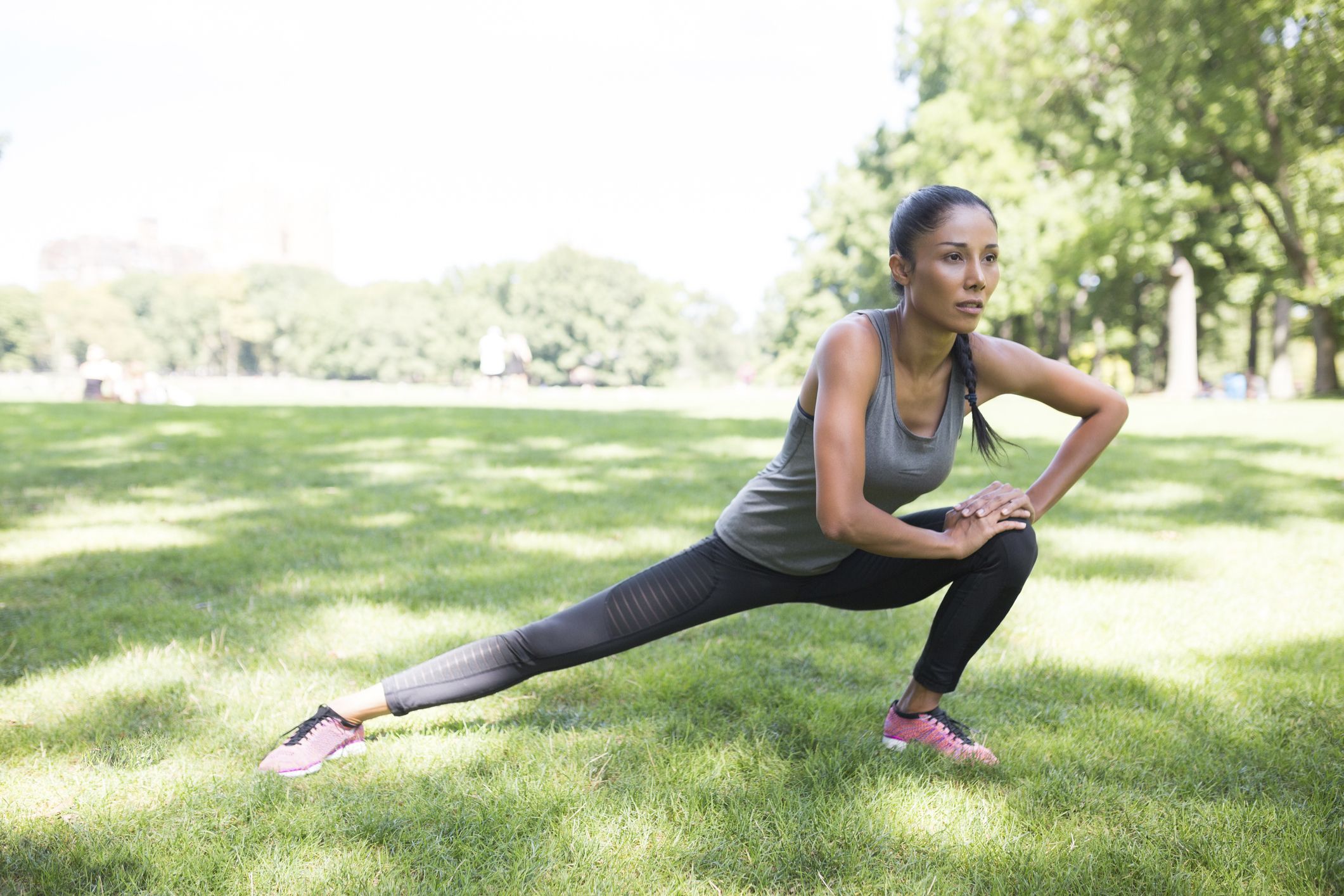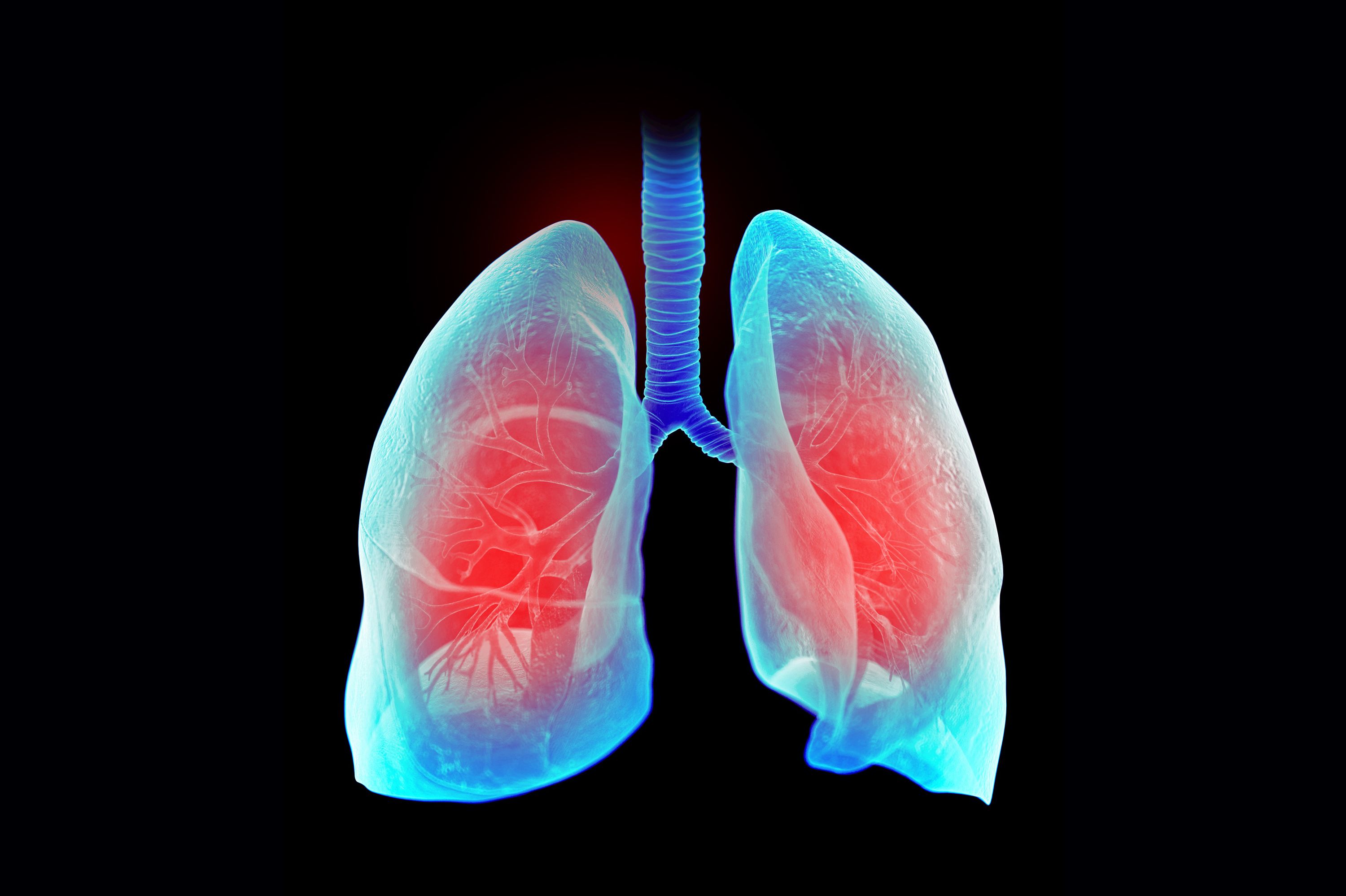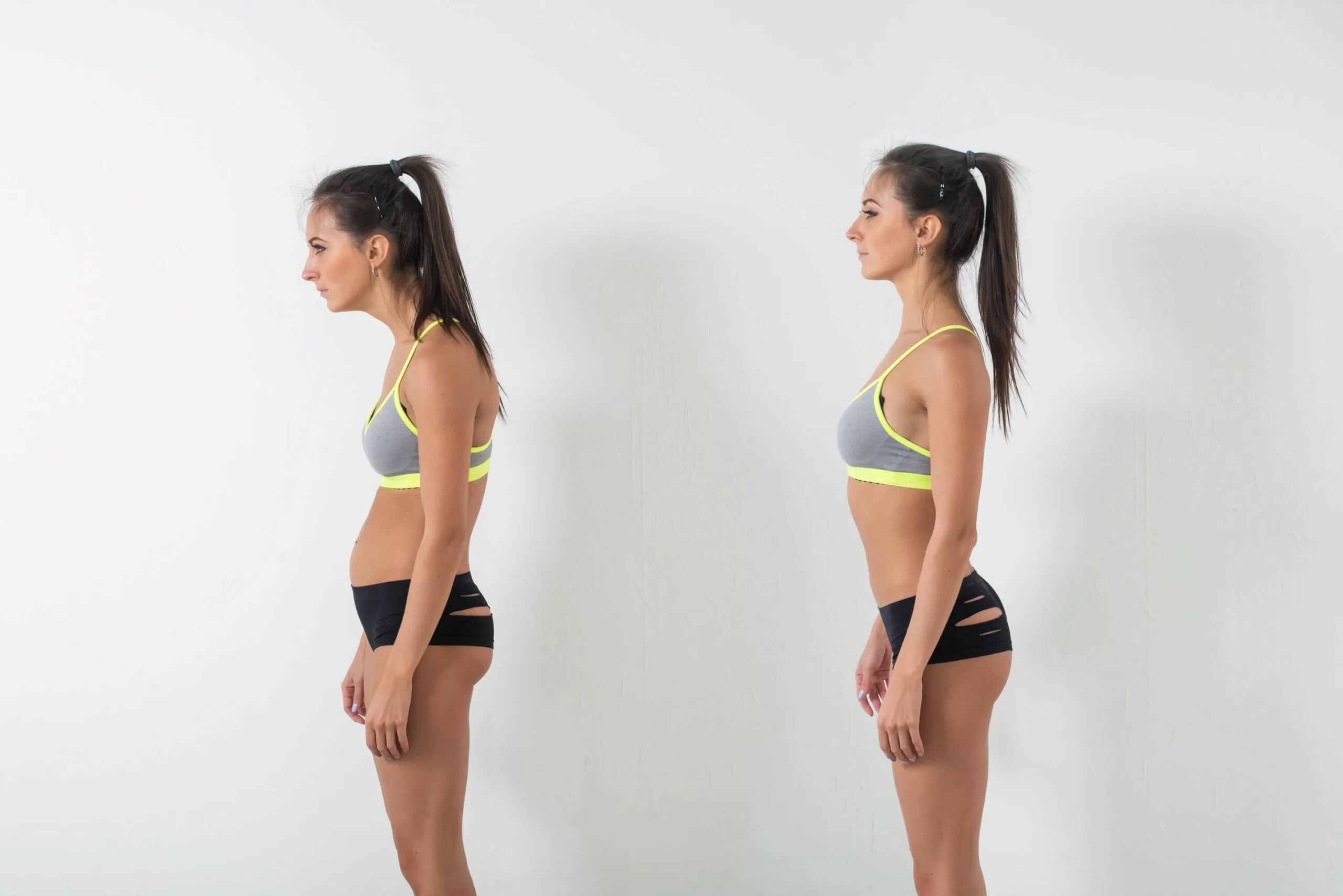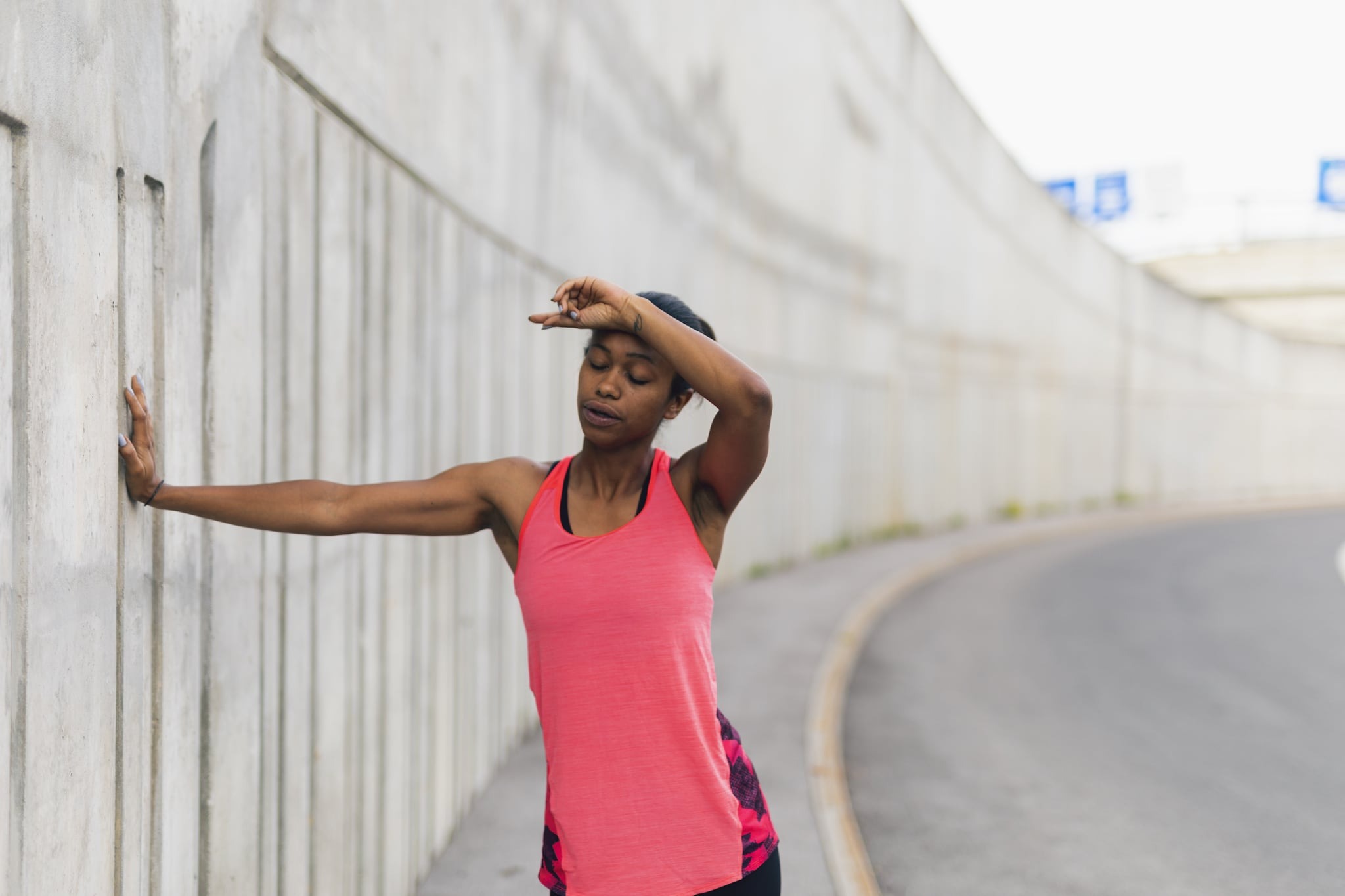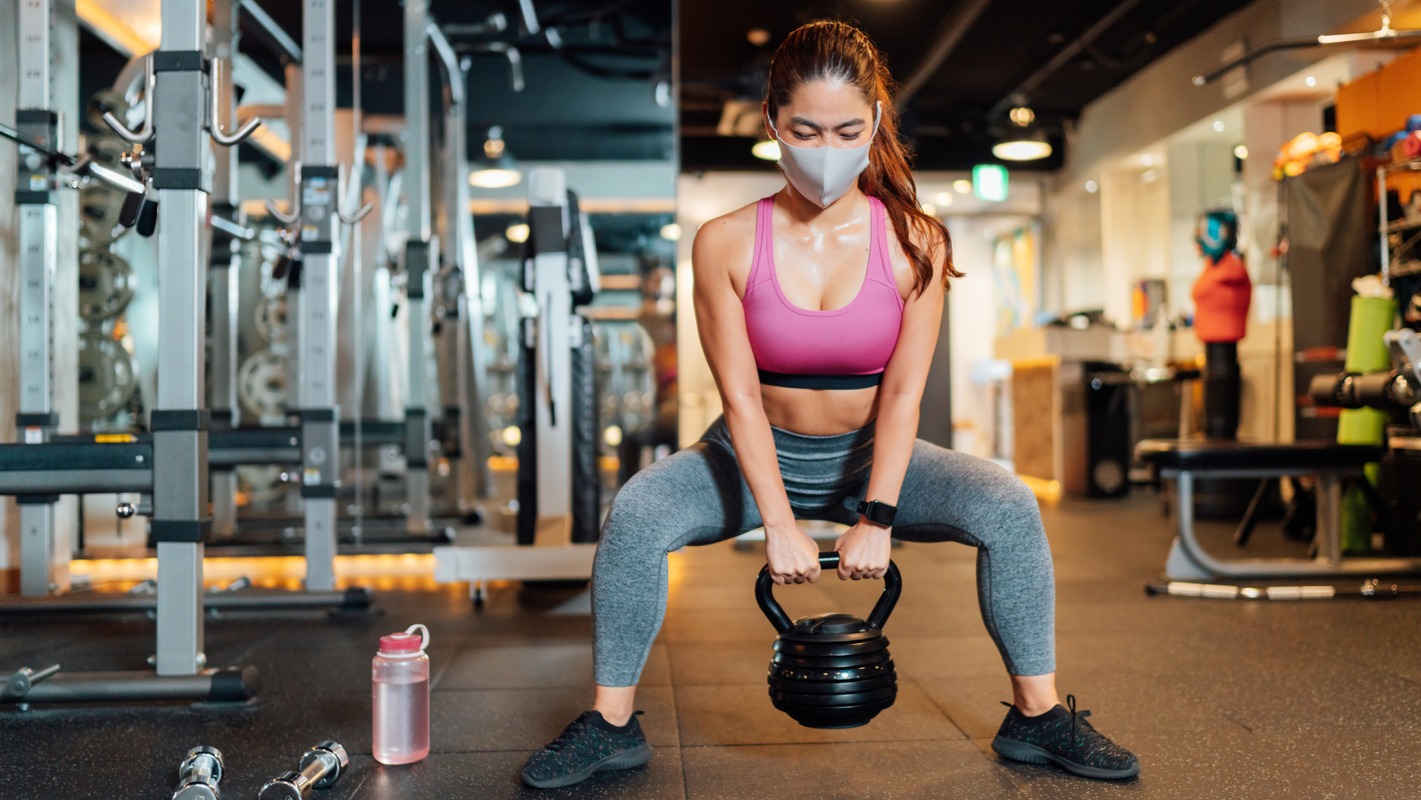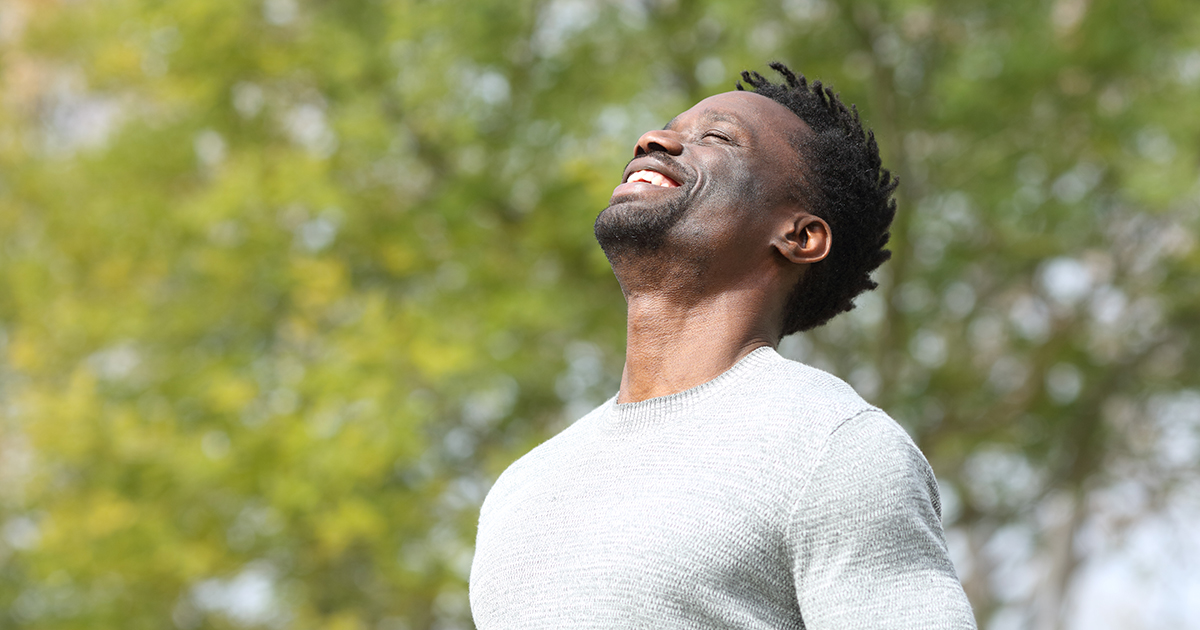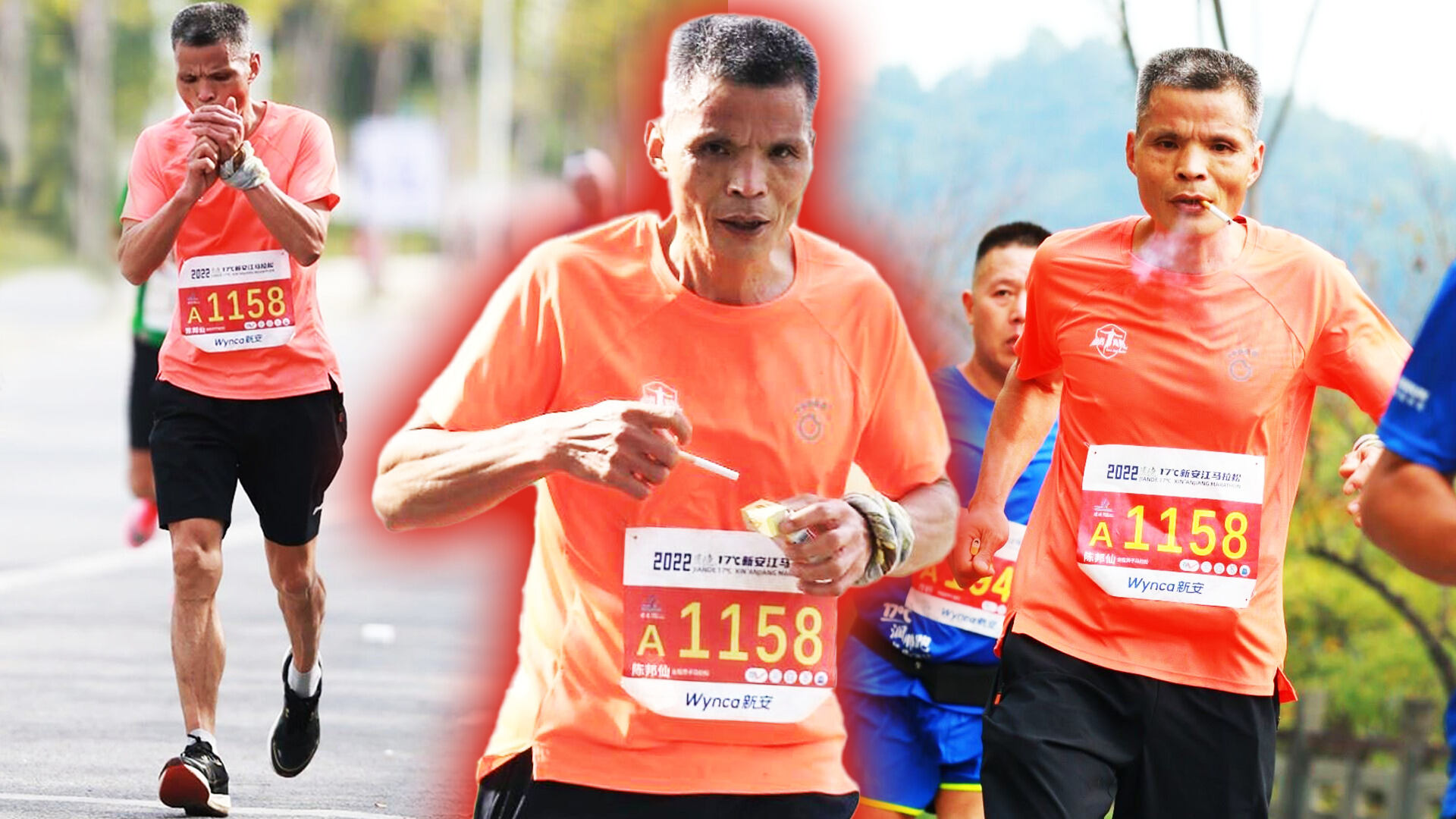

Featured
When To Breathe During Exercise
Published: October 3, 2023
Discover when to take breaths during exercise with our expert tips and techniques. Improve your workout performance with the featured advice you need.
Introduction
When it comes to exercise, we often focus on the physical aspects such as strength, flexibility, and endurance. However, there is one crucial element that is often overlooked – proper breathing. The way we breathe during exercise can have a significant impact on our performance, stamina, and overall experience.
Proper breathing techniques not only help us supply oxygen to our muscles, but they also aid in releasing tension, reducing fatigue, and improving focus. Whether you’re engaging in cardio workouts, weightlifting, yoga, or high-intensity interval training (HIIT), understanding when and how to breathe can optimize your exercise routine and help you achieve better results.
In this article, we will explore the importance of proper breathing during exercise and provide specific breathing techniques for different types of workouts. No matter what your fitness goals are, mastering the art of breathing can take your workouts to the next level. So, let’s dive in and unlock the power of breath!
Importance of Proper Breathing
Proper breathing is not just about taking in air and expelling it; it is about maximizing your body’s efficiency during exercise. The way we breathe affects our blood circulation, heart rate, and overall performance. Here are a few key reasons why proper breathing is essential:
- Improved Oxygen Intake: During exercise, our muscles require an increased supply of oxygen. Proper breathing techniques ensure that our lungs can efficiently take in oxygen and deliver it to the muscles, promoting better endurance and preventing fatigue.
- Enhanced Focus and Mind-Body Connection: Deep, controlled breathing not only supplies oxygen to the muscles but also aids in calming the mind and improving focus. By regulating our breath, we can enhance our mind-body connection, making our movements more precise and deliberate.
- Reduced Fatigue and Improved Stamina: Oxygen is crucial for breaking down nutrients and generating energy. When we breathe correctly, our muscles receive an optimal supply of oxygen, reducing the build-up of lactic acid and decreasing muscle fatigue. This allows us to exercise for longer periods with improved stamina.
- Enhanced Recovery: Efficient breathing techniques promote better blood circulation and help remove waste products, such as carbon dioxide, from the body. This aids in the recovery process by reducing muscle soreness and improving overall post-workout recovery.
- Stress Reduction and Relaxation: Conscious breathing activates the parasympathetic nervous system, which is responsible for relaxation and recuperation. By incorporating proper breathing techniques into your exercise routine, you can reduce stress levels and experience a greater sense of calm and relaxation.
Now that we understand the importance of proper breathing during exercise, let’s explore specific breathing techniques for different types of workouts, so you can optimize your performance and reap the benefits of mindful breathing.
Breathing Techniques for Different Types of Exercise
Each type of exercise requires specific breathing techniques to optimize performance and maximize results. Let’s delve into the recommended breathing techniques for a variety of workouts:
- Cardiovascular Exercise (Running, Cycling, Swimming): When engaging in cardiovascular exercises, such as running, cycling, or swimming, rhythmic breathing is crucial. Breathe in through your nose and out through your mouth to take in maximum oxygen and expel carbon dioxide efficiently. Coordinate your breath with your strides or strokes, taking shorter breaths for faster movements and longer breaths for slower paces.
- Weightlifting and Strength Training: A common mistake during weightlifting is breath holding, which can increase blood pressure and limit your strength. Instead, utilize the technique of “exhaling on the exertion.” Inhale before you start the movement, and as you exert force, exhale steadily. This exhale should be used during the most challenging part of the exercise, such as lifting the weight or pushing through a repetition.
- Yoga and Pilates: In yoga and Pilates, breath control is a fundamental aspect of the practice. The “Ujjayi breath” technique is commonly used, where you breathe in and out through your nose while slightly constricting the back of your throat. This creates a gentle, audible sound similar to waves crashing. This deep, steady breathing helps enhance focus, control, and stability during poses and movements.
- High-Intensity Interval Training (HIIT): HIIT workouts involve intense bursts of exercise followed by short recovery periods. During the active intervals, breathe deeply and quickly through both your nose and mouth, focusing on bringing in as much oxygen as possible. During the recovery periods, focus on slow, controlled breaths to help regulate your heart rate and prepare for the next intense interval.
Remember, these breathing techniques are general guidelines, and it’s essential to listen to your body and adjust according to your comfort and fitness levels. Practicing proper breathing techniques for specific exercises will enhance your performance, prevent injury, and ensure that you get the most out of your workouts.
Inhalation and Exhalation Timing
In addition to understanding the appropriate breathing techniques for different types of exercise, it’s essential to consider the timing of inhalation and exhalation. The timing of your breath can significantly impact your performance. Here are some guidelines to help you optimize your inhalation and exhalation timing:
- Cardiovascular Exercise: During cardiovascular exercises such as running or cycling, it’s beneficial to sync your breathing with your movement. Inhale during the recovery phase or when your muscles are not under significant strain. Exhale during the exertion phase, such as when your foot strikes the ground or when pedaling against resistance. This timing can help support your body’s effort and provide stability.
- Weightlifting and Strength Training: For weightlifting exercises, it’s important to exhale during the exertion phase, as mentioned earlier. Inhale before you start the movement, and as you exert force, exhale steadily. However, for isometric exercises or static holds, such as planks or wall sits, it’s recommended to hold your breath during the exertion to enhance stability and support your core muscles.
- Yoga and Pilates: Yoga and Pilates emphasize the synchronization of breath and movement. Generally, inhalation is associated with expanding the body and moving into a posture, while exhalation is connected to contracting the body and moving out of a posture. The breath should be smooth and continuous, using the rhythmic flow of the inhale and exhale to enhance the flow of energy and maintain stability throughout the practice.
- High-Intensity Interval Training (HIIT): During HIIT workouts, the intensity varies between work and recovery intervals. It’s important to take quick, deep breaths during the work intervals to fuel your body with oxygen, but try to maintain a consistent rhythm. During the recovery intervals, focus on slower, controlled breaths to regulate your heart rate and prepare for the next intense interval.
Remember that these are general guidelines, and it’s important to listen to your body and adjust according to your own comfort and fitness level. Proper inhalation and exhalation timing can optimize your energy, enhance your performance, and help you achieve better results during your workouts.
Breathing Tips for Running
Running is a popular form of cardiovascular exercise that requires proper breathing techniques to optimize your performance and endurance. Here are some helpful tips for breathing while running:
- Focus on Deep Belly Breaths: Instead of shallow chest breathing, practice deep belly breathing while running. Inhale deeply through your nose, allowing your belly to expand, and then exhale fully through your mouth. This deep breathing technique maximizes oxygen intake and helps release tension.
- Sync Your Breathing with Your Strides: Coordinate your breath with your running strides. You can try inhaling for two or three steps and exhaling for the same number of steps. Find a rhythm that feels comfortable and natural for you, allowing your breathing pattern to match your running cadence.
- Utilize the 2:2 Breathing Ratio: Another effective technique is the 2:2 breathing ratio, where you inhale for two strides and exhale for two strides. This balanced ratio helps maintain a steady breathing pattern and keeps your body well-oxygenated.
- Stay Relaxed and Check Your Posture: Pay attention to your posture while running, ensuring that you’re relaxed and maintaining an upright position. Tension in your upper body can restrict your breathing. Relax your shoulders, keep your chest open, and allow your lungs to expand fully with each breath.
- Practice Diaphragmatic Breathing Exercises: Strengthen your diaphragm, the primary breathing muscle, by incorporating diaphragmatic breathing exercises into your training routine. This involves consciously engaging your diaphragm to take deeper breaths and strengthen its efficiency.
- Gradually Increase Your Endurance: If you struggle with breathlessness while running, focus on gradually increasing your endurance. Start with shorter distances and work your way up, allowing your body to adjust to the demands of running and improving your breathing capacity over time.
Remember, finding the right breathing technique may take some practice and experimentation. Listen to your body, adjust as needed, and find a rhythm that works best for you. With consistent application of proper breathing techniques, you’ll enhance your running performance, improve your endurance, and enjoy a more comfortable and efficient run.
Breathing Tips for Weightlifting
Proper breathing plays a vital role in weightlifting, ensuring optimal performance, stability, and safety. Here are some helpful tips to improve your breathing technique during weightlifting:
- Exhale During the Exertion: When lifting weights, exhale during the most challenging part of the exercise, known as the exertion phase. This is typically when you’re lifting the weight or pushing against resistance. Exhaling during this phase can help stabilize your core and enhance your strength.
- Avoid Breath Holding: One common mistake in weightlifting is breath holding, which can increase blood pressure and limit your strength. Instead, remember to breathe consistently throughout your lifts. Take a deep breath in before starting the movement, and as you exert force, exhale steadily.
- Engage the Core: Proper breathing in weightlifting is closely tied to core engagement. Before starting a lift, take a deep breath into your abdomen, allowing it to expand fully. This action helps brace and stabilize your core, providing a solid foundation for lifting.
- Control Your Breath: Focus on controlling your breath during the entire duration of the lift. Avoid rapid, shallow breathing, and instead, take slow, controlled breaths throughout the movement. This helps maintain stability, prevent dizziness, and provide better control over the weights.
- Breathe Through Your Mouth: While natural breathing can occur through your nose or mouth, during weightlifting, it’s often more efficient to breathe through your mouth. Breathing through your mouth allows for a larger volume of airflow, ensuring sufficient oxygen intake during intense lifting.
- Utilize the Valsalva Maneuver: For heavy lifts, such as squats or deadlifts, the Valsalva maneuver can help enhance stability and protect your spine. This technique involves taking a deep breath into your diaphragm, holding your breath, and slightly contracting your abdominal muscles while lifting. Remember to release your breath once you have completed the lift.
Remember to practice these breathing techniques consistently and gradually increase the weight and intensity of your lifts. By integrating proper breathing techniques into your weightlifting routine, you’ll improve your strength, stability, and overall performance while reducing the risk of injury.
Breathing Tips for Yoga and Pilates
In the practices of yoga and Pilates, proper breathing is a fundamental aspect that enhances the mind-body connection, promotes relaxation, and improves overall performance. Here are some essential breathing tips to incorporate into your yoga and Pilates practice:
- Focus on Deep, Diaphragmatic Breathing: Deep breathing engages the diaphragm, allowing for a full exchange of oxygen and carbon dioxide. As you inhale, expand your belly and ribcage, filling your lungs with air. Exhale fully, drawing your navel towards the spine. This deep, diaphragmatic breathing calms the nervous system and enhances relaxation.
- Utilize Ujjayi Breathing: Ujjayi breath, also known as “victorious breath,” is commonly used in yoga and Pilates. Inhale through your nose, filling your lungs, and slightly constrict the back of your throat. Exhale through your nose with a gentle, audible sound, resembling waves crashing. This technique helps cultivate rhythm, focus, and internal heat.
- Synchronize Breath with Movement: In both yoga and Pilates, coordinate your breath with the movements. Inhale as you lengthen or expand the body and exhale as you contract or move deeper into a posture. This synchronization promotes mindfulness, balance, and flow in your practice.
- Take Restorative Breaths in Resting Poses: During restful poses or rests in-between exercises, take restorative breaths. Inhale deeply, filling your lungs, and exhale slowly and completely, releasing any tension or stress. This allows for relaxation, restoration, and rejuvenation.
- Focus on Nasal Breathing: Nasal breathing, where you inhale and exhale through your nose, is beneficial in yoga and Pilates. Breathing through the nose filters and humidifies the air, improving oxygen absorption. It also helps maintain a calm and steady breath flow, enhancing your practice.
- Practice Pranayama Techniques: Incorporate various pranayama, or breath control, techniques into your yoga and Pilates practice. Techniques like Alternate Nostril Breathing (Nadi Shodhana) or Cooling Breath (Sitali Pranayama) can help balance energy, cool the body, and enhance focus and relaxation.
Remember to listen to your body and adjust your breathing according to your comfort and the specific practice or pose you’re engaging in. Explore different breathing techniques, experiment with various rhythms, and find what works best for you. With consistent practice, you’ll deepen your breath awareness, enhance your mind-body connection, and experience the full benefits of yoga and Pilates.
Breathing Tips for High-Intensity Interval Training (HIIT)
High-Intensity Interval Training (HIIT) involves short bursts of intense exercise followed by brief recovery periods. Proper breathing techniques are essential to optimize performance, endurance, and recovery during HIIT workouts. Here are some valuable breathing tips to incorporate into your HIIT routine:
- Take Deep, Quick Breaths: During the active intervals of HIIT, when you’re pushing your limits, focus on taking deep, quick breaths. Inhale deeply through your nose, expanding your belly, and exhale forcefully through your mouth. This rapid breathing enables you to take in more oxygen and expel carbon dioxide efficiently.
- Sync Your Breathing with Your Movements: Coordinate your breath with your movements during HIIT exercises. Inhale during the easier or preparatory phase of the movement, and exhale during the exertion phase or when you’re exerting the most effort. This synchronization helps in maintaining rhythm, stability, and control.
- Utilize Quick Recovery Breath: During the short recovery periods in HIIT, focus on taking quick recovery breaths to regulate your heart rate and prepare for the next intense interval. Breathe in deeply through your nose and exhale completely through your mouth to recover and calm your body.
- Engage Your Core: Proper breathing in HIIT is closely connected to core engagement. Focus on activating your core muscles while you breathe, as this provides stability and support during your dynamic movements.
- Listen to Your Body: Pay attention to how your body responds to different breathing techniques during various exercises. Everyone is unique, and what works for one person may not work for another. Experiment with different rhythms, inhalation-exhalation patterns, and find what feels most comfortable and effective for you.
- Hydrate Properly: Hydration is crucial during intense exercise. Make sure to drink enough water before and after your HIIT workout to support proper breathing and overall performance.
It’s important to note that during intense HIIT workouts, maintaining proper form and focusing on your movements should take priority over breath control. As you become more experienced with HIIT, you’ll develop a natural rhythm and find the breathing techniques that work best for you. With consistent practice and attention to your breath, you’ll maximize your performance, endurance, and results during your HIIT workouts.
Conclusion
Proper breathing is often overlooked but plays a crucial role in optimizing your exercise routines. Whether you’re running, weightlifting, practicing yoga, or engaging in high-intensity interval training (HIIT), understanding how to breathe correctly can significantly enhance your performance, endurance, and overall experience.
By incorporating specific breathing techniques for different types of exercise, you can supply your muscles with oxygen, release tension, reduce fatigue, and improve focus. Remember to synchronize your breathing with your movements, utilizing deep belly breaths, and coordinating your inhales and exhales accordingly. Practice breathing through your nose or mouth, depending on the exercise, and engage your core for stability and support.
In running, focus on rhythmic breathing and finding a stride-to-breath ratio that suits your pace. During weightlifting, exhale during the exertion phase and maintain control over your breath throughout each lift. In yoga and Pilates, emphasize deep, diaphragmatic breathing and synchronize your breath with the movements. And in HIIT, take quick, deep breaths during active intervals while utilizing shorter recovery breaths to regulate your heart rate.
Overall, the key to mastering proper breathing techniques is to listen to your body, be mindful of your breath, and adjust accordingly. With practice and consistency, you’ll find the breathing techniques that work best for you, enhance your performance, and improve your overall fitness journey.
So, the next time you hit the gym or roll out your yoga mat, remember to focus not only on your physical movements but also on your breath. Embrace the power of proper breathing and unlock the full potential of your exercise routines!

